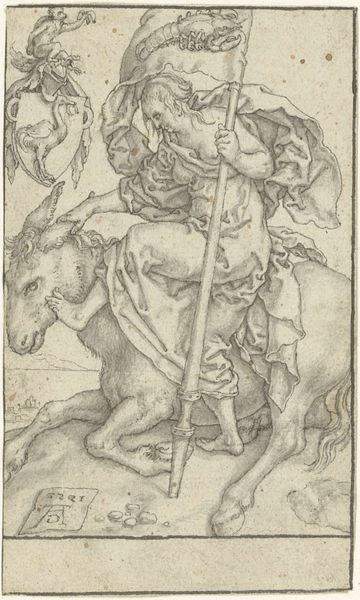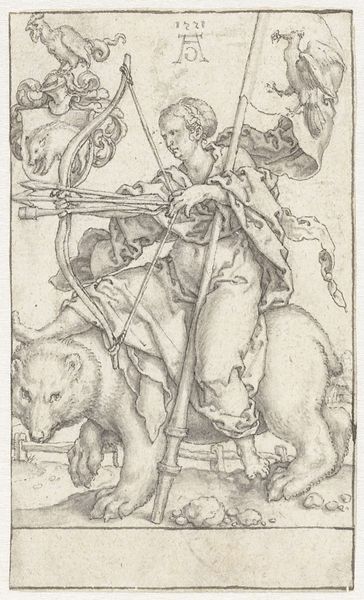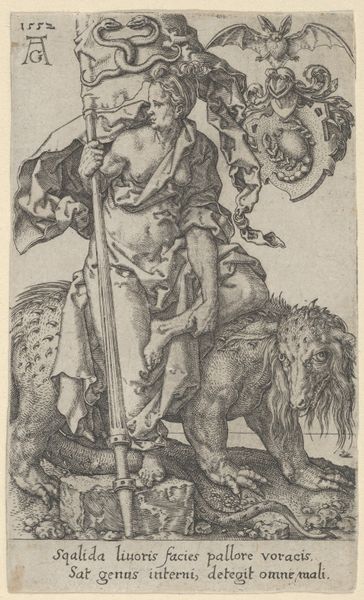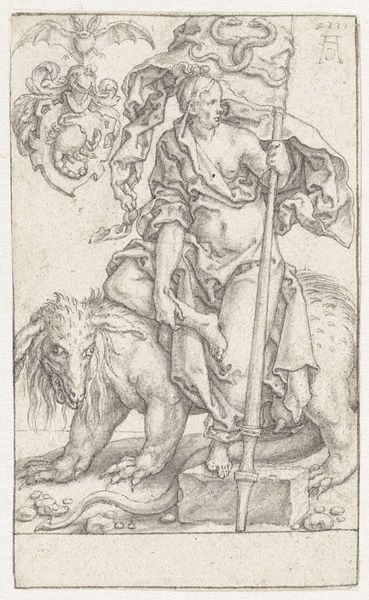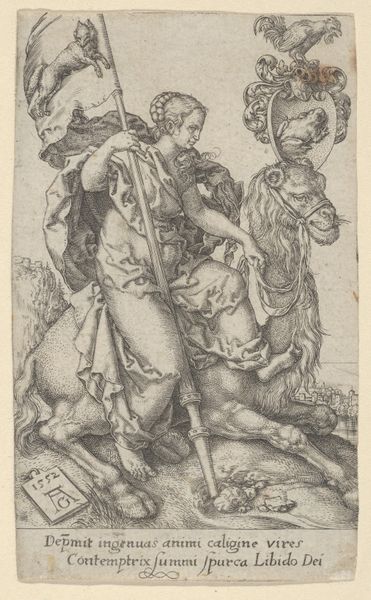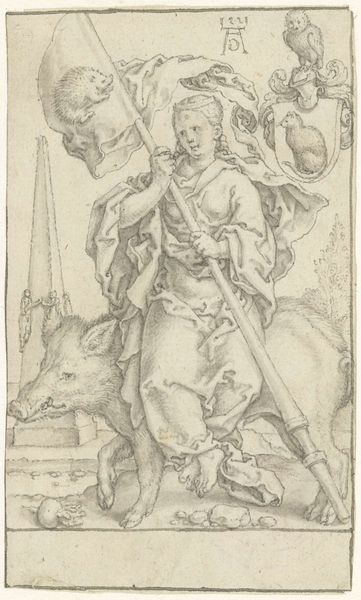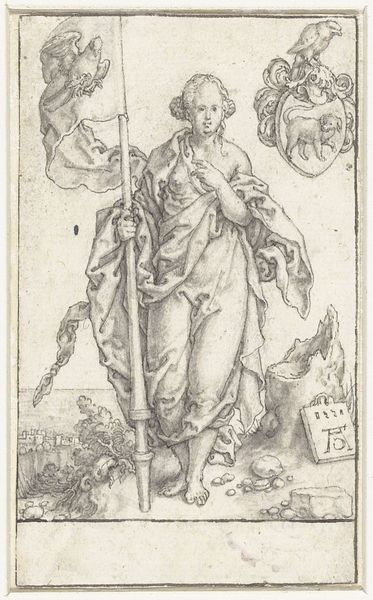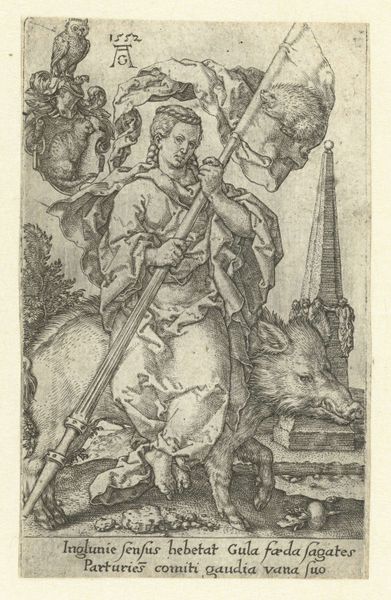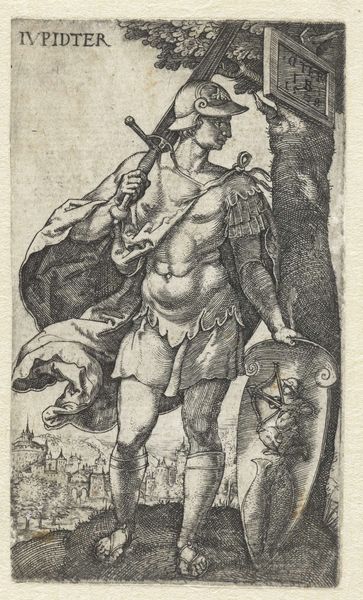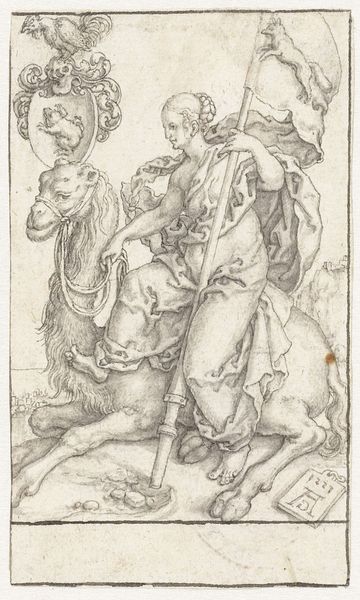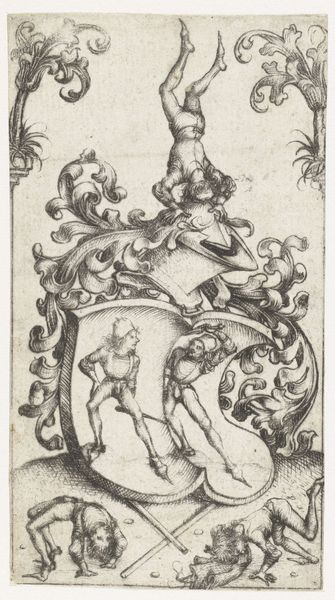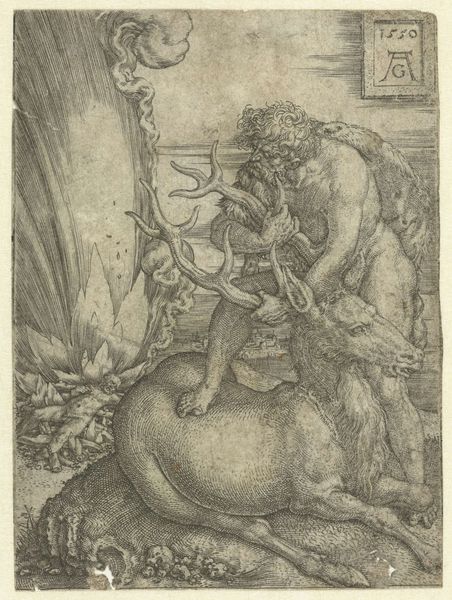
drawing, print, engraving
#
drawing
#
allegory
# print
#
mannerism
#
figuration
#
history-painting
#
engraving
Dimensions: height 104 mm, width 62 mm
Copyright: Rijks Museum: Open Domain
Heinrich Aldegrever made this tiny print, Hebzucht, which means 'Greed' in Dutch, using an engraving technique sometime in the first half of the 16th century. The incised lines of the engraving are incredibly fine, creating a wealth of detail. These details include the texture of the bear's fur, the folds of the allegorical figure's gown, and the jumble of coins at their feet. Engraving demands considerable skill. The artist uses a tool called a burin to manually carve lines into a metal plate, a labor-intensive process that requires careful control and precision. The printmaking process also allowed Aldegrever to disseminate his visual warning about avarice to a broad audience. Its themes of wealth, commerce, and morality were highly relevant in a society undergoing significant economic change. It also speaks to the social function of craft at this time, as a means of both artistic expression, and mass communication.
Comments
No comments
Be the first to comment and join the conversation on the ultimate creative platform.

